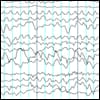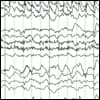- Find a Doctor
-
For Parents
- Before Your Visit
- During Your Visit
- After Your Visit
- More Resources for Parents
Patient & Visitor Resources -
Services
- Locations
-
About Us
- About Childrens
- Find it Fast
- Additional Resources
Find it FastAdditional Resources - MyCHP
ALERT:
There is construction in and around UPMC Children’s Hospital that is affecting the traffic flow – please allow for extra time traveling into the hospital.
- Find a Doctor
- For Parents
-
Services
-
Frequently Searched Services
- Asthma Center
- Brain Care Institute (Neurology & Neurosurgery)
- Cancer
- UPMC Children's Express Care
- Ear, Nose, & Throat (ENT)
- Emergency Medicine
- Endocrinology
- Gastroenterology
- Heart Institute
- Genetic & Genomic Medicine
- Infectious Diseases
- Nephrology
- Newborn Medicine
- Primary Care
- Pulmonary Medicine
- Rheumatology
- Surgery
- Transplant Programs
- See All Services
-
Frequently Searched Services
- Locations
- About Us
- MyCHP
- I Want To
- More Links









 Simple-partial seizures typically last less than one minute. The child may show different symptoms depending upon which area of the brain is involved. If the abnormal electrical brain function is in the occipital lobe (the back part of the brain that is involved with vision), the child's sight may be altered. The child's muscles are commonly affected. The seizure activity is limited to an isolated muscle group, such as fingers or to larger muscles in the arms and legs. Consciousness is not lost in this type of seizure. The child may also experience sweating, nausea, or become pale.
Simple-partial seizures typically last less than one minute. The child may show different symptoms depending upon which area of the brain is involved. If the abnormal electrical brain function is in the occipital lobe (the back part of the brain that is involved with vision), the child's sight may be altered. The child's muscles are commonly affected. The seizure activity is limited to an isolated muscle group, such as fingers or to larger muscles in the arms and legs. Consciousness is not lost in this type of seizure. The child may also experience sweating, nausea, or become pale.
